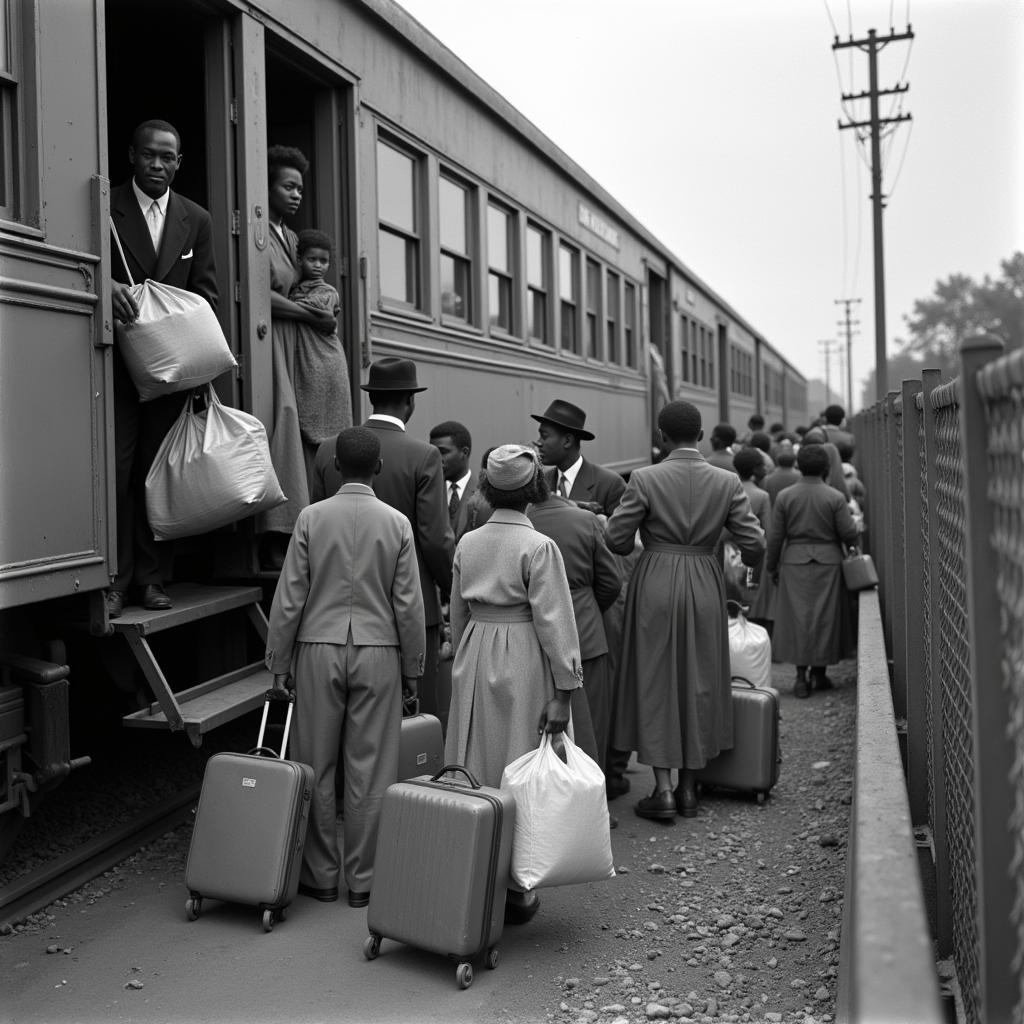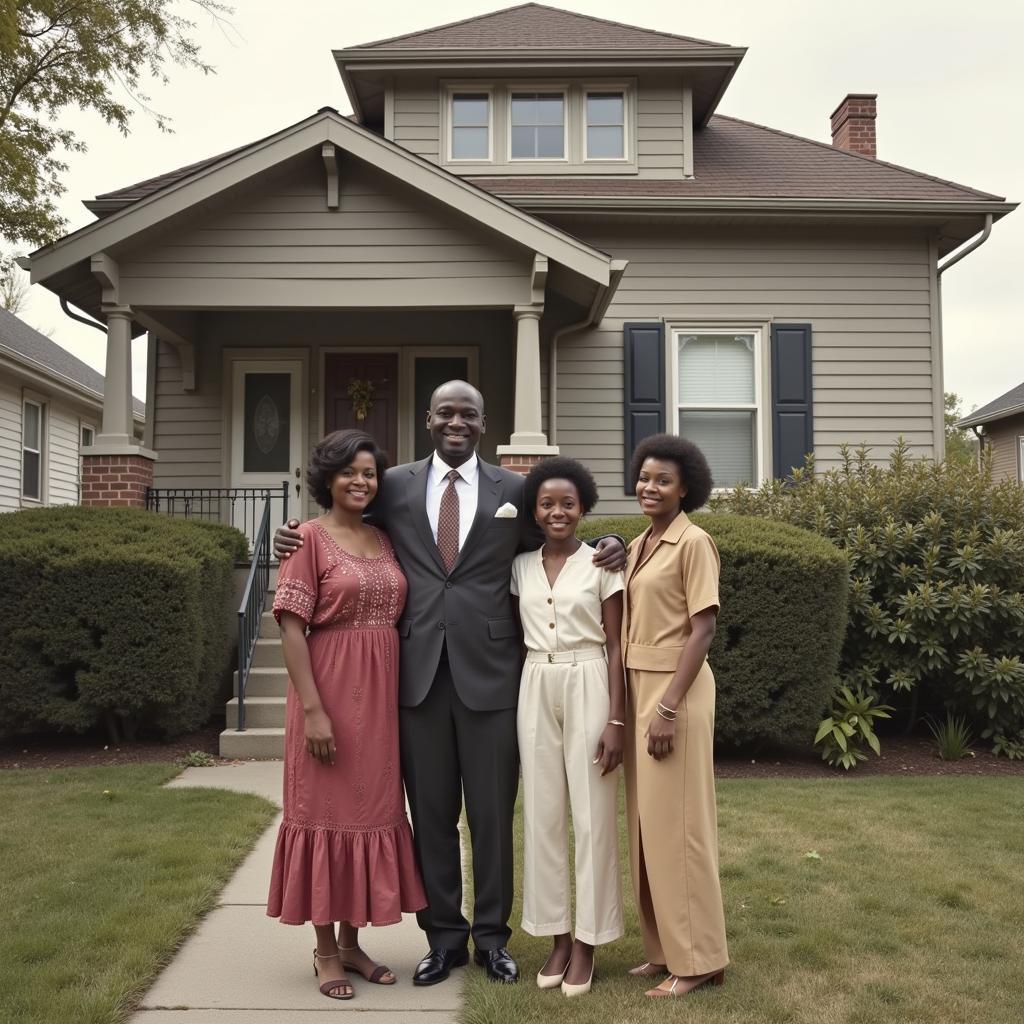The African American Great Migration, spanning from the early 1900s to the 1970s, witnessed millions of Black Americans leaving the rural South for urban centers in the North and West. This mass movement, driven by the pursuit of economic opportunity and escape from racial oppression, dramatically reshaped the social, cultural, and demographic landscape of the United States.
 African American Families Leaving the South
African American Families Leaving the South
Escaping the Grip of Jim Crow: Push Factors of the Great Migration
Life in the South under Jim Crow was defined by segregation, discrimination, and violence. African Americans faced limited economic opportunities, denied basic human rights, and subjected to constant threats and acts of racial terror. The boll weevil infestation, devastating cotton crops across the South, compounded their economic hardship.
Economic Hardship and the Promise of Industrial Jobs
The North, experiencing an industrial boom during the early 20th century, offered a glimmer of hope. Factories in burgeoning cities like Chicago, Detroit, and New York City needed workers, and Black Southerners saw a chance for a better life. Word spread through letters from family and friends, newspapers like the Chicago Defender, and labor recruiters eager to fill positions.
Fleeing Racial Violence and Seeking Social Change
Beyond economic prospects, the North symbolized freedom and the possibility of a more just society. While racism existed in the North, it was less overt and systemic than the legalized segregation of the Jim Crow South. Black newspapers and organizations actively encouraged migration, portraying the North as a land where African Americans could exercise their rights, educate their children, and live with dignity.
 African American Workers in a Northern Factory
African American Workers in a Northern Factory
Building New Lives in the North: Challenges and Triumphs
The Great Migration brought about significant cultural and demographic shifts. Black communities flourished in northern cities, contributing to the Harlem Renaissance and the rise of jazz music. However, the journey north wasn’t without its challenges.
Facing Housing Discrimination and Urban Poverty
Migrants often encountered hostility, discrimination, and limited housing options upon arrival. Overcrowding, poverty, and strained resources became prevalent in many Black neighborhoods. Competition for jobs and housing sometimes led to racial tensions between Black migrants and established white communities.
Creating Community and Advocating for Civil Rights
Despite the difficulties, Black migrants exhibited remarkable resilience. They built their own institutions—churches, businesses, social organizations—that provided support, fostered community, and became centers for activism. The Great Migration laid the groundwork for the Civil Rights Movement, as Black communities in the North gained political and economic power, amplifying their voices in the fight for equality.
A Legacy of Transformation: The Enduring Impact of the Great Migration
The Great Migration stands as a pivotal moment in American history, reshaping the nation’s social, cultural, and political landscape. It forever altered the demographics of Black America, shifting its population from predominantly rural to largely urban.
 African American Family in their New Home
African American Family in their New Home
This mass movement sparked the growth of vibrant Black communities in the North, contributing to the arts, music, literature, and political consciousness. The legacy of the Great Migration continues to shape American society today, reminding us of the enduring pursuit of freedom, opportunity, and equality.
Leave a Reply